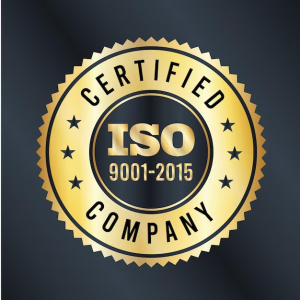
The Quality Management System, or ISO 9001:2015, is regarded as the most widely used and certified ISO system worldwide. Over 1 billion enterprises have formally approved the ISO 9001:2015 Management System standards.
Defining and documenting your company’s processes is a crucial step or component of your QMS. If something isn’t recorded, it won’t assist you in achieving your company’s quality vision and objective. Therefore, it must be noted that having a documented system in place is essential to the success of your company and gives you knowledge of what is happening within it. Organisations are said to have a Systematic QMS if they adhere to the standards and have a well-documented system. For ISO certification in Qatar, you must contact the right consultants that understand the requirements set for the ISO 9001 Standard and Quality Management System.
Due to a lack of funding, lack of commitment, or a lack of management vision, the majority of businesses and organisations are unable to achieve the specified QMS requirements. One should realise that the documented system adds to the operational strength of your company.
What Do QMS Requirements Entail, And Why Is It Crucial?
According to the standards established by ISO 9001:2015, a quality management system comprises the rules and regulations that must be documented and managed inside the organisation. The main components that stop accidents and incidents that lead to failures in your firm are specified processes and established procedures.
In addition to instructing you to document processes and procedures, QMS advises you to adhere to the rules and documented system. By exceeding stakeholder expectations, you will better meet your client’s needs.
The following are ISO Standard requirements for the part of the documented system that an organisation must uphold and adhere to:
- Organisational Context
- Leadership,
- Support,
- Planning
- Operation,
- Evaluation of Performance
- Continuous Development
Before beginning the implementation process, The organisation must be aware of the requirements—also known as QMS clauses—mentioned above.
Context of the Organisation:
To meet this criterion, you must identify the goal of your quality management system as well as the long-term course of your company. Determine the expectations, interests, and internal and external problems that impact your quality management system. Recognise what internal and external stakeholders expect from you, including customers, vendors, and other interested parties.
Leadership;
Clause 5 of the QMS defines the leadership requirements. To accomplish this, top management must define and identify the responsible resources.
- The development of a quality management system
- Quality goals and policies must be documented.
Within the organisation, effective communication of quality objectives.
Planning:
One must use risk-based thinking to determine the opportunities and hazards that impact the quality management system and describe the measures to be applied as part of planning needs. So,
Determine the potential risk, its level of severity, and any occurrences.
Create a plan to reduce and prevent undesirable situations.
Support; The QMS mandates that your company offer assistance to fulfil the goals of your quality management system.
Supports:
- Providing adequate infrastructure, human resources, tools, machinery, software, or other necessary equipment.
- Creating a more secure and safe environment.
Operations:
The QMS’s Clause 8 on Operations defines your company’s core operations or line of business. Apply the outlined procedures, guidelines, and goals to your services and products. As part of daily operations, one must gather data on implemented actions, efficacy, and feedback.
- Process monitoring, inspection, and testing are done to guarantee high-quality goods and services.
- The ability of checklists to achieve better results for your services or products.
- gathering and preserving the results’ records.
Performance Evaluation:
Clause 9 outlines how to assess performance after the policies, processes, and goals have been implemented. When evaluating the performance,
- Make sure the outcomes satisfy your QMS’s goals.
- Evaluating the outcomes in light of the predictions.
Continual Improvement
Clause 10 of the Continuous Improvement Clause directs you to broaden your prospects for improvement and prepare for the future. The QMS system directs you to enhance the services or products to fulfil market or customer expectations with the help of top management’s guidance and recommendations. By enhancing the system’s capabilities, the organisation establishes new goals and objectives and uses the QMS system to advance.
Conclusion
Top Management Leadership must make all employees aware of the significance of QMS Implementation for the Quality Management System’s success and effectiveness. This strengthens internal systems to achieve your organisation’s operational standardisation and QMS goals. Your organisation’s planning, support, and operations depend heavily on training, communication, and infrastructure.
Featured Image Source : https://img.freepik.com/premium-vector/iso-9001-2015-certification-iso-90012015-logo-iso-9000-certification_526569-652.jpg?size=626&ext=jpg&ga=GA1.1.1173742830.1671113603&semt=sph



